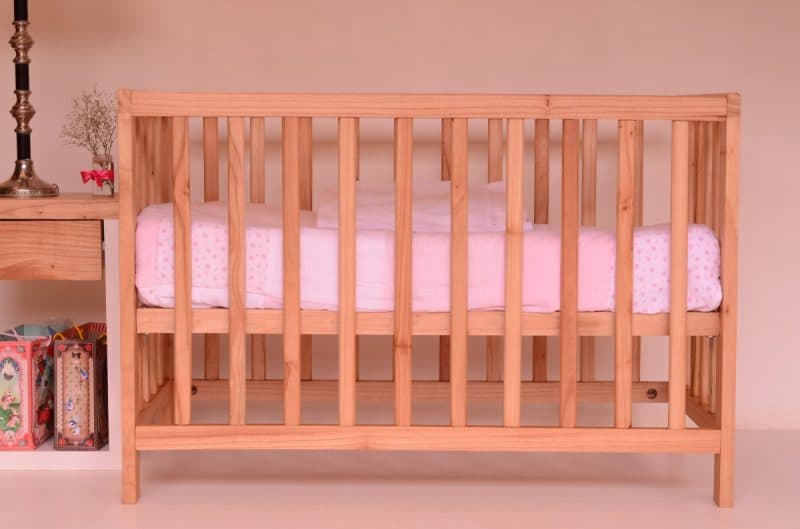How firm should a child mattress be? Well, this is the best place for your inquiry.
Your little love’s comfort should be your priority, so the baby should be fast asleep on the perfect mattress.

A firm mattress for a baby should be anything above a rating of 36 using the Indentation Load Deflection.
I know you are very excited about choosing the right mattress for your lovely child.
Without further talking, let’s get right into the topic!
How Firm Should A Child’s Mattress Be?
In buying a baby mattress, its fluffiness can affect the child’s posture.
So, how firm should a child mattress be?
Mattress firmness is rated using the Indentation Load Deflection rating.
It measures on a scale from 12 to 50.
Take note that anything above a rating of 36 indicates a firm mattress.
You should also consider the right size before buying one.
When your baby is laid on the mattress, You want to distribute his/her weight evenly.
This one is important in maintaining the surface flat with slight shrinkage.
Why Is A Firm Mattress Should Be For Babies?
Your baby will be spending a long time in that crib, and you should consider the comfort he/she feels while lying on it.
It is good to ask why is a firm mattress should be for babies.
Here are some things you need to consider:
Skeletal support
Their cribs will give support for their bones and skeleton in growing.
A firm mattress is best for their cute situation.
You should know that a baby contains at least 300 bones in their bodies, while adults have only 206 of them!
As babies have more bones, they are also softer ones.
With this, they require more support to secure development.
Firm mattresses offer excellent support for babies; meanwhile, soft ones don’t.
It is guaranteed those firm mattresses help babies become stronger!
Safety
It would help if you noted that softer mattresses come with SIDS risks or Sudden Infant Death Syndrome.
Also, there are possibilities that the bed might suffocate your tiny infant is sleeping on a soft mattress.
Typically, babies sleep on their stomachs. If they are put into softer mattresses, there is a higher risk of suffocative injury.
Soft mattresses also have softer sides and corners. It might cause your baby’s limbs to be stuck in these gaps.
How To Test Firmness Of A Baby Mattress?
Are you wondering what is the feeling of the right bed for your baby?
There are two methods on how to test the firmness of a baby mattress.
First method
In this method, you will be only needing your fingers and a baby mattress to test its firmness.
Step #1. Assessing the mattress
You should observe the physical conditions of the baby bed.
Assess if there are no spikes, levels, or any depressions found on the surface.
Step #2. Exerting pressure
By using your hand, place it on its center and edges. Press gently and observe what happens next.
If the bed is firm, it will not form any shapes like your hand and quickly goes into its old form.
You should also check the mattress if it has been dismissed by the manufacturing, ensuring its quality.
Step #3. Testing the mattress
If you have a crib, test the baby bed in it.
Then, apply gentle force to its edges by pressing it firmly.
A firm mattress has edges that will be too tough to be pushed within, creating no gaps for injury.
Second method
This method will require you some materials to do so.
Gather the following:
- Ruler,
- Marker,
- 12 CDs,
- Cling wrap, and
- Two 1-L cartons of milk with square bottoms
Step #1. Pile up the CDs
You should stack 12 consecutive disks in the first step and cover them lightly using a clear cling wrap.
It will ensure they stand and in good condition.
Step #2. Marking the cartons
Take a piece of the milk box and measure 40 millimeters from its bottom edge.
You can measure it with a ruler.
Take your ruler, then draw a straight line aligned to its bottom.
Step #3. Arranging the boxes
Place the carton in a horizontal position above the CDs.
You should line up the drawn line with the side of the topmost disk.
Then, place the other box straight above the first box.
Step #4. Observing the firmness
It would help if you observed the portion below the drawn line.
If it interacts with the mattress, then it is not firm and unsafe for your infant.
However, if it remained upright and didn’t touch the mattress, then you are assured that it is already firm to be used.
Firming Things Up!
Great! Now you know how firm should a child mattress be.
It must be rated above 36 using the Indention Load Deflation.
A firm mattress helps your baby’s bones to develop and avoid any injuries to happen.
Also, there are two DIY methods you can use to test the bed’s firmness.
I hope this article answered your question! Please share it with someone who needs to know this!
